5 February
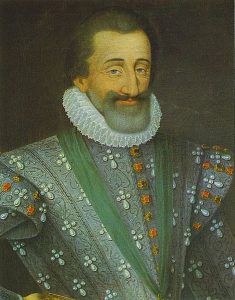
Henry of Navarre
1537 - Birth of diplomat Sir Henry Brooke, son of George Brooke, 9th Baron Cobham, and his wife Anne Bray. Anne Bray was a lady in waiting to Anne Boleyn, and there is controversy over whether she was the "Nan Cobham" who was one of the Queen's accusers in 1536. In Elizabeth I's reign, Brooke was made a gentleman pensioner and carried out embassies to Spain, the Low Countries and France for her. In October 1579, Elizabeth appointed him as her resident ambassador in France, until he was replaced by Sir Edward Stafford in 1583.
1556 – Treaty of Vaucelles between Philip II of Spain and Henry II of France. By the terms of this treaty, Henry II had to relinquish Franche-Comté to Philip, but the treaty was quickly broken.
1557 – Death of Sir William Portman, Judge and Lord Chief Justice of England and Wales from 1555. He was buried at St Dunstan-in-the-West, Fleet Street, London.
1576 – Henry of Navarre, the future Henry IV of France, abjured Catholicism at Tours, rejoining the Protestant forces, following his escape from Paris on 3rd February.
1605 – Death of Sir Edward Stafford, son of Sir William Stafford (Mary Boleyn's second husband) and his second wife Dorothy Stafford. Edward was an MP and diplomat, and there is controversy over his "spying" activities during the Armada and exactly how much information he passed to Mendoza. He was buried in St Margaret's, Westminster.
6 February
1557 - The remains of reformers Martin Bucer and Paul Fagius were exhumed and publicly burned, after being posthumously found guilty of heresy. They were burned, along with their books, on Market Hill in Cambridge. Click here to read more.
1561 – Baptism of Tailboys Dymoke (pseudonym Thomas Cutwode) at Kyme in Lincolnshire. He was the son of Sir Robert Dymoke, and his wife, Bridget (née Clinton). Dymoke is known for his allegorical poem, Caltha poetarum, or, “The Bumble Bee”, which he published under the name of Thomas Cutwode.
1585 – Death of Edmund Plowden, lawyer, legal scholar and law reporter, in London. He was laid to rest in the Middle Temple Church. Cambridge University libraries and the British Library contain manuscripts of his commentaries and opinions, and he is known for his 1571 “ Les comentaries ou les reportes de Edmunde Plowden” volume of law reports covering cases during the reigns of Edward VI, Mary I and Elizabeth I.
7 February
1477 or 1478 - Traditional birthdate of Sir Thomas More in Milk Street, London. He was the son of Sir John More, lawyer and judge on the King’s Bench, and Agnes Graunger, daughter of Thomas Graunger, a Merchant of the Staple of Calais and an Alderman of London. More was made Henry VIII's Lord Chancellor after the fall of Cardinal Wolsey in 1529, but ended up being executed as a traitor on 6th July 1535 after refusing to take the Oath of Succession. He believed that “no temporal man may be the head of spirituality”, even his beloved King.
1526 – Shrovetide Joust and what is thought to be the first indication of Henry VIII’s courtly pursuit of Anne Boleyn. Henry VIII rode out in cloth of gold and silver “richely embraudered, with a mannes harte in a presse, with flames about it, and in letters were written, Declare ie nos, in Englishe, Declare I dare not”.
1587 – Sir Amyas Paulet read out Mary, Queen of Scots' death warrant to her, and informed her that she would be executed the following day.
1591 – Burial of Sir Nicholas Bagenal (Bagnal), soldier and Marshal of the army in Ireland in the reigns of Edward VI and Elizabeth I. He was buried at Newry.
1594 – Death of Barnabe Googe, pastoral poet and translator. He was buried at c*ckerington church, near Alvingham. Googe's works included a dedicatory poem in Thomas Gressop's translation of Nicolaus Cabasilas, “A briefe treatise, conteynynge a playne and fruitfull declaration of the popes usurped primacye”, a translation of Zodiacus vitae by Marcellus Palingenius, and his “Eglogs, Epytaphes, and Sonettes”.
1623 – Death of Thomas Cecil, 1st Earl of Exeter, courtier, soldier and eldest son of William Cecil, 1st Baron Burghley, probably at Wimbledon. He was buried in the St John the Baptist Chapel, Westminster Abbey. His offices under Elizabeth I included High Sheriff of Northamptonshire, Lord Lieutenant of Yorkshire, Lord President of the Council of the North and Knight of the Garter.
8 February
1545 – Death of Sir John Arundell of Lanherne at the home of his nephew, Richard Roscarrock of Roscarrock, in St Endellion in Devon. He was buried at St Columb Major. Arundell had fought against the Cornish rebels in 1497 and served Henry VII and Henry VIII as receiver of the duchy of Cornwall from 1508 until 1533.
1587 - Mary, Queen of Scots was executed in the Great Hall of Fotheringhay Castle. Click here to read more about her execution.
1601 – Robert Devereux, 2nd Earl of Essex, his supporters and two hundred soldiers gathered at Essex House. Essex then marched into the city crying “For the Queen! For the Queen! The crown of England is sold to the Spaniard! A plot is laid for my life!”. However, the people ignored him and stayed indoors. Essex was forced to give up after his supporters deserted him, and he surrendered after Lord Admiral Nottingham threatened to blow up his house if he did not give himself up. Click here to read more.
1608 – Death of Nicholas Bond, clergyman and President of Magdalen College, Oxford, from 1590. He was buried in the college chapel.
1614 – Burial of John Bracegirdle, poet, at St Mary's Church, Rye, in Sussex. He is known for his 1602 “‘Psychopharmacon, the mindes medicine, or, The phisicke of philosophie”, a translation of the work of Anicius Manlius Torquatus Severinus Boethius into English blank verse.
9 February
Shrove Tuesday - see February Feast days in Tudor Life magazine and also click here to read about Shrove Tuesday, pancakes and Lent.
1554 – Original date set for the execution of Lady Jane Grey and Lord Guildford Dudley. Extra time was given for Dr John Feckenham, Mary I's Chaplain and Confessor, to try and save Jane's soul by persuading her to recant her Protestant faith and return to the Catholic fold.
1555 – Protestant martyr John Hooper, Bishop of Gloucester and Worcester was burned at the stake in Gloucester. He had been deprived of his bishopric in March 1554, due to his marriage, and was executed for heresy as part of Mary I's persecution of Protestants. Click here to read more.
1555 – Burning of Rowland Taylor, Protestant martyr, Rector of Hadleigh in Suffolk, Canon of Rochester Cathedral, Archdeacon of Bury St Edmunds, Archdeacon of Cornwall and former chaplain to Thomas Cranmer. He was burned for heresy on Aldham Common, near Hadleigh.
1604 – Death of Anne Dudley (née Russell), former maid-of-honour to Elizabeth I, Countess of Warwick and third wife of Ambrose Dudley, Earl of Warwick. She died at North Hall in Northaw, Hertfordshire, the property left to her by her husband on his death in 1590. Anne served Elizabeth I as an extraordinary Gentlewoman of the Privy Chamber until Elizabeth's death. Anne chose to be buried with her family, the Russells, at Chenies in Buckinghamshire, rather than with her husband at Warwick.
10 February
1542 – Catherine Howard was taken to the Tower of London by barge.
1550 – Death of Sir Edmund Walsingham, soldier and Lieutenant of the Tower of London. He was buried at Chislehurst. Walsingham was Lieutenant of the Tower when Anne Boleyn and Catherine Howard were imprisoned there.
1554 – Death of Sir William Sidney, courtier and former Steward to Prince Edward (future Edward VI), at Penshurst. He was buried at Penshurst parish church.
1557 – Death of Sir Edward Montagu, lawyer and Judge, at his manor of Boughton, Northamptonshire, and buried in the church of St Mary, Weekley. Montagu served Henry VIII as Lord Chief Justice of the Court of the King's Bench from 1539 to 1545 when he became Lord Chief Justice of the Common Pleas. He was also a Privy Councillor and acted as one of the executors of the King's will in 1547.
1564 – Death of Henry Neville, 5th Earl of Westmorland, at Kelvedon, Essex. He was buried at Staindrop. The teenage Neville was taken hostage during the 1536 Pilgrimage of Grace to ensure his father's co-operation with the rebels. He served Henry VIII as privy councillor and, when Edward VI was dying, signed the letters patent naming Lady Jane Grey as his successor. He swapped sides shortly after Edward's death, declaring for Mary I and bore the Second Sword and Cap of Maintenance at her coronation in October 1553.
1567 - Henry Stuart, Lord Darnley, was murdered at Kirk o’ Field, Edinburgh, in the Royal Mile, just a few hundred yards from Holyrood House where his wife, Mary, Queen of Scots, and baby son, the future James VI/I, were staying. Click here to read more.
1612 – Death of Jodocus Hondius (Joost de Hondt), artist, engraver and cartographer, at Amsterdam. Hondius worked with De Bry and Augustin Ryther in 1589 on engravings for the English version of “The Mariner's Mirror”, and was also responsible for a world map. Other works included portraits of Elizabeth I, illustrations for the voyages of Sir Francis Drake, a celestial globe and terrestrial globe.


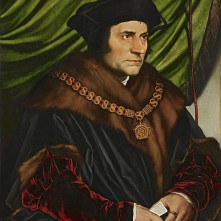

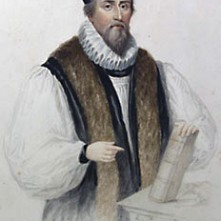

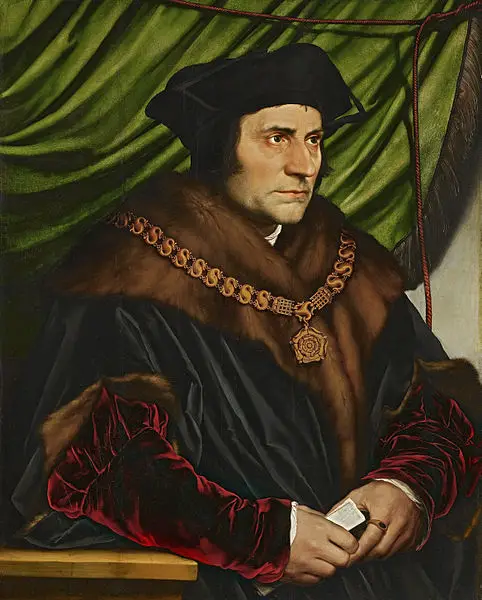
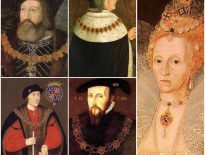
Leave a Reply